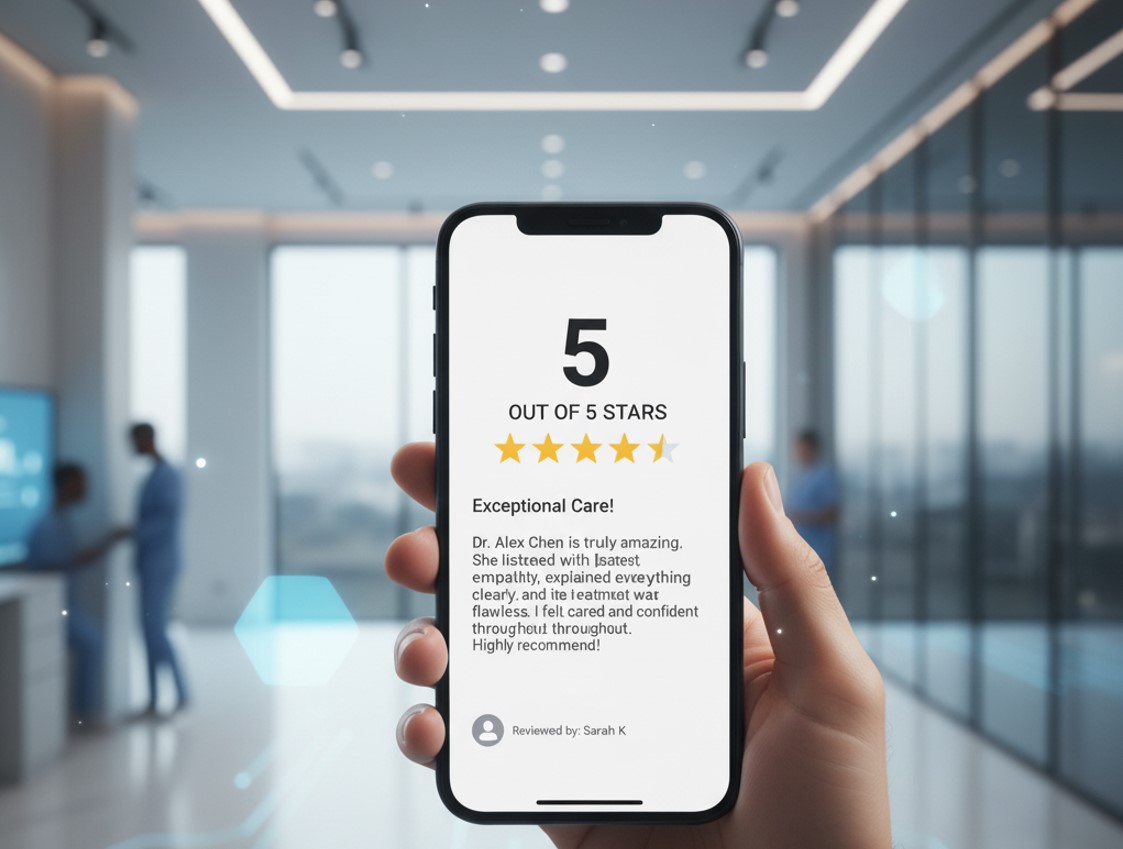In today’s digital age, a doctor’s online reputation is no longer a “nice-to-have”—it’s essential. Patients searching for a healthcare provider don’t just rely on word of mouth anymore. They look up reviews, compare ratings, check social media, and evaluate what they find online. For doctors and healthcare professionals, managing that digital footprint is critical: it can affect patient trust, referrals, and ultimately the success of your practice.
In this blog post, we’ll explore why online reputation matters for medical professionals, the key challenges, and actionable strategies to build, protect, and improve your reputation online.
Why Online Reputation Management for Doctors Matters
-
Patient Trust & Decision-Making
Research shows that a large majority of patients use online reviews and ratings when choosing a healthcare provider. If patients see mostly positive feedback, it builds confidence. Conversely, negative reviews—or worse, no reviews—can raise doubts. -
Search Rankings & Visibility
Search engines like Google take into account reviews and localized reputation signals when showing results for local queries (e.g. “cardiologist near me”). A strong positive online presence helps you appear in more searches, which means more visibility and more potential patients. -
Professional Credibility and Peer Perception
A polished, consistent, and positive online presence helps not only with patients but also establishes your standing among peers, referring physicians, and in professional circles. This can lead to collaborations, speaking engagements, or being considered for hospital privileges. -
Competitive Advantage
Healthcare is competitive. Practices that manage their online reputation well are more likely to attract and retain patients than those that ignore it. Having strong reviews, being visible on major medical listing sites, and being active on social media—all of this gives you an edge. -
Feedback for Quality Improvement
Online reviews and patient satisfaction surveys often reveal issues with care, operations, or patient experience that may otherwise go unnoticed. Using feedback to make improvements leads to better outcomes and, in turn, strengthens your reputation.
Key Challenges in Managing Reputation Online
Before diving into strategies, it’s good to understand the typical obstacles:
- Negative reviews & criticism — inevitable in any service-oriented profession. One bad review can disproportionately affect perception, especially if there are few positive ones to balance it.
- Misinformation or unrealistic expectations — patients sometimes leave reviews based on misunderstandings, lack of information, or unrealistic expectations.
- Lack of consistency — low or infrequent engagement, outdated profiles, and missing information on directories can harm trust.
- Time constraints and resources — many medical professionals are stretched thin. ORM requires monitoring, responding, content creation, etc., which takes time and possibly specialized skills.
- Regulatory/privacy issues — healthcare is sensitive. Patient privacy, medical ethics, and legal compliance (HIPAA in the U.S., GDPR in the EU, etc.) impose limits on what you can say, share, or how you respond. Drlogy
Strategies & Best Practices for Effective Online Reputation Management for Doctors
Here are proven strategies and best practices healthcare professionals can implement to build, protect, and enhance their online reputation.
1. Audit & Claim Your Online Profiles
- Find all existing online profiles and listings — Google My Business (now Google Business Profile), Healthgrades, Vitals, RateMDs, CareDash, etc. Often, profiles exist that you didn’t create.
- Claim & verify them — make sure you have ownership or control. That allows you to edit information, respond to reviews, and keep them updated.
- Ensure consistency of name, credentials, address, contact info, specialties etc. across directories. Inconsistent info hurts SEO and patient trust.
2. Maintain a Professional, Informative Website
- Create a clean, user-friendly website to serve as your “home base” online. Use it to present credentials, services, specialties, accepted insurance, contact information, and appointment booking if feasible.
- Include testimonials and patient reviews (with permission) and maybe even case studies or patient stories (appropriately anonymized). These credible, personal touches increase trust.
- Produce high-quality, relevant content (blog posts, videos) that addresses patient concerns, common questions, and helps with SEO (improving visibility).
3. Encourage & Facilitate Patient Feedback (Positive Reviews)

- After patient appointments, send follow‑ups asking for feedback or reviews. When a patient has had a positive experience, they are more likely to share.
- Use digital tools or automation (e.g. emails, SMS, portals) to make leaving reviews easier. Include links, buttons, QR codes, etc.
- In-office signage or reminders may also help (gentle prompts). But always ensure compliance with local laws/regulations (e.g. not promising incentives for reviews).
4. Monitor, Respond & Engage

- Monitor reviews and mentions regularly. Use Google Alerts, social listening tools, and dashboards that combine reviews across platforms.
- Respond to reviews—both positive and negative. Thank people for compliments, and address complaints respectfully. If negative, show empathy, offer to take the conversation offline where possible, and try to remedy the issue.
- Engagement shows patients and prospective patients that you care. It signals accountability.
5. Use Feedback to Improve Practice
- Online or in‑person patient surveys can uncover pain points—appointment wait times, staff behavior, communication issues, etc. Addressing these improves both patient experience and reputation.
- Track metrics such as average review rating over time, sentiment trends, number of reviews, etc. Use these to monitor your progress.
6. Produce & Promote High-Quality Content
- Blog posts, videos, Q&A content, and FAQs—all can help answer patients’ common concerns and establish you as an authority.
- Educational content also helps SEO (boosting visibility) and can push negative or irrelevant content lower in search engine results.
7. Be Strategic on Social Media
-
Choose platforms where your patients are active (for example, Facebook, Instagram, LinkedIn, maybe TikTok, depending on demographic). You don’t have to be everywhere.
-
Post content that educates, informs, and humanizes you/your practice—not just promotions. E.g. health tips, patient stories (with consent), behind‑the‑scenes, clinic updates.
-
Respond to comments, messages. Demonstrating responsiveness builds trust.
8. Use Reputation Management Tools & Platforms
-
Tools that aggregate reviews, alert you to new mentions, help manage your profiles across many directories, save time, and ensure nothing slips through.
-
Sentiment analysis tools can help you see patterns in feedback—what is being praised, what is criticized. This helps to prioritize what to improve.
9. Handle Negative Reviews & Crises Well
-
Don’t ignore negative feedback. A timely, empathetic response can sometimes turn a dissatisfied patient into a satisfied one.
-
Acknowledge the issue, avoid defensiveness, offer to resolve or explain, and sometimes seek to take the conversation offline. Maintaining professionalism matters.
-
Watch for false or defamatory reviews—if applicable, seek removal (where permissible by platform policies). But be careful not to violate patient privacy or platform rules.
10. Legal, Ethical & Compliance Considerations
-
Always respect patient privacy and confidentiality. Do not disclose medical details when responding to reviews or in public content without patient consent. Drlogy
-
Be transparent about credentials, affiliations, etc. Misleading claims can damage trust and have legal ramifications.
Putting It All Together: A Sample Roadmap
To make the above ideas more actionable, here is a roadmap you can adapt to your practice:
| Phase | What to do | Timeframe |
|---|---|---|
| Audit | List out all online listings & profiles, see which are claimed/unclaimed, note current review ratings, duplicate or outdated info. | Week 1 |
| Optimize Basic Info | Claim profiles, standardize name/contact/services, set up website if needed, populate with credentials, photos, testimonials. | Weeks 2‑3 |
| Set up Monitoring & Feedback Systems | Deploy tools or dashboards for reviews, set up Google Alerts or equivalent, create in‑office/post‑visit surveys. | Weeks 3‑4 |
| Encourage Reviews | Train staff to remind patients, automate post‑visit review requests, and make it easy to review. | Month 2 onward |
| Content Strategy & Social Media | Develop a blog calendar, decide on social networks, and schedule regular posts. | Month 2‑3 onward |
| Respond & Improve | Respond to new reviews promptly; use feedback to improve practice, staff training etc. | Ongoing |
| Measure & Adjust | Regularly check metrics (ratings, number of reviews, search visibility), analyze sentiment, and adjust strategy. | Monthly or quarterly reviews |
Case Studies / Examples (Hypothetical but Based on Common Patterns)
-
Dr. A, a dermatologist, had few reviews and an outdated web profile. After auditing and claiming her listings, she asks satisfied patients to leave reviews, optimizes her Google Business Profile, and shared educational blog posts. Within six months, her average star rating rose, she showed up more in “dermatologist near me” searches, and patient inquiries increased by ~30%.
-
Clinic B had a few negative reviews complaining about waiting time and staff communication. They introduced a patient survey immediately post‑appointment and used the feedback to reorganize scheduling and train front desk staff. They responded to negative reviews, explained changes they made, and as a result saw fewer complaints and better reviews over time.
Common Mistakes & What to Avoid
-
Asking for fake reviews or incentivizing patients inappropriately. This can backfire legally or ethically, and many review platforms prohibit it. Drlogy
-
Ignoring negative feedback entirely—people will assume silence means indifference.
-
Responding defensively or emotionally in public responses. Always stay professional.
-
Neglecting your online presence—letting profiles go outdated, photos old, contact info wrong. Even small inconsistencies erode trust.
-
Violating privacy or confidentiality laws when discussing patient cases or details.
FAQs – Online Reputation Management for Doctors
Here are some frequently asked questions doctors and healthcare professionals have about managing their reputation online:
Q1. What is Online Reputation Management for Doctors?
A: It refers to the strategies and actions taken to monitor, influence, and improve how a doctor or medical practice is perceived online through reviews, search results, social media, and directories.
Q2. Why is online reputation so important for healthcare professionals?
A: Because over 70% of patients rely on online reviews to choose a doctor. A strong reputation helps build trust, attract new patients, and retain existing ones.
Q3. How can I ask patients for reviews without sounding pushy?
A: Keep it simple and respectful. For example, send a follow-up message post-visit:
“Thank you for visiting our clinic today. If you had a good experience, we’d really appreciate your feedback on Google/Healthgrades.”
Q4. What should I do if I get a negative review?
A: Respond professionally without revealing any private health information. Acknowledge the concern and invite the reviewer to contact your office to resolve the issue offline.
Q5. Is it ethical or legal to pay for reviews?
A: No. Buying or incentivizing reviews violates the terms of most platforms and can result in penalties or legal issues, especially in the healthcare industry.
Q6. Can I remove fake or defamatory reviews?
A: You can flag fake or harmful reviews on most platforms for removal. However, success depends on platform guidelines. It’s better to focus on collecting genuine positive reviews to dilute the impact.
Q7. Do I need to be active on all social media platforms?
A: No. Choose platforms where your patients are most active. For most doctors, Facebook and Instagram are enough. LinkedIn is useful for professional networking.
Q8. How often should I update my profiles and respond to reviews?
A: Check and respond to reviews weekly. Update profiles anytime your practice info, hours, or services change.
Conclusion
Online Reputation Management for doctors is not just about marketing—it’s about trust, credibility, patient experience, and transparency. The digital space is now often the first place patients go to judge you. A strong, honest, active, and patient‑focused online reputation can be one of your most powerful assets.
By auditing your presence, claiming and optimizing your profiles, consistently collecting and responding to feedback, improving based on what you learn, offering high‑value content, and staying mindful of legal/ethical boundaries, you can build and protect a reputation that helps your practice grow.
If you’re a doctor or healthcare professional—and whether you’re solo, part of a group practice, or working in a hospital setting—setting up a proactive online reputation strategy is not optional anymore. It’s part of delivering excellent care in the modern world.
Learn more about: How to Recover Your Online Reputation: A Business Owner’s Guide





